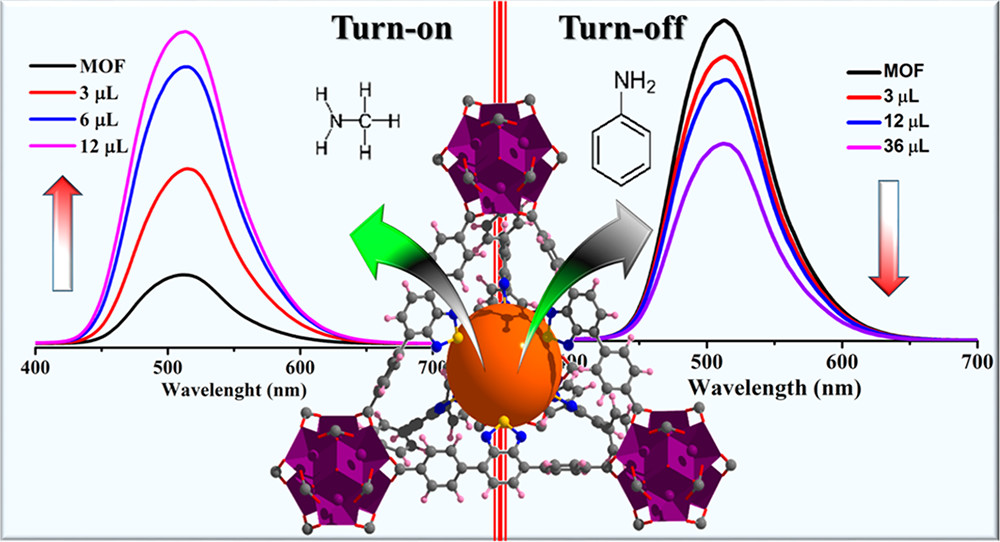

A luminescent Zr(IV)-based metal–organic framework (MOF), with the underlying fcu topology, encompassing a π-conjugated organic ligand with a thiadiazole functionality, exhibits an unprecedented low detection limit of 66 nM for amines in aqueous solution. Markedly, this ultralow detection is driven by hydrogen-bonding interactions between the linker and the hosted amines. This observation is supported by density functional theory (DFT) calculations, which clearly corroborate the suppression of the twisting motion of thiadiazole core in the presence of amine, reducing significantly the nonradiative recombination pathways and subsequently enhancing the emission intensity. Credibly, nicotine regarded as a harmful chemical and bearing an amine pending group is also detected with high sensitivity, positioning this MOF as a potential sensor for practical environmental applications. This finding serves also as a benchmark to understand the sensing mechanism in MOFs.
